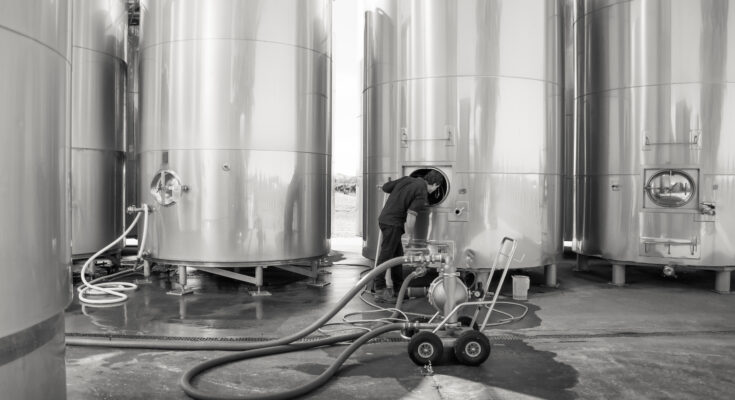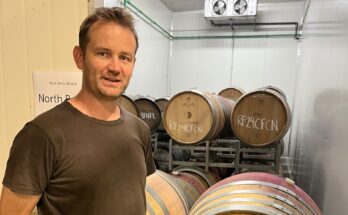I’m down in Wairarapa after my latest stint in Hawke’s Bay – driving down through the beautiful region on my way to Martinborough further south. First stop is at Matahiwi, which I know from a couple of beautiful Pinots a year or two ago, but not too much else. Today I’m meeting winemaker Miles Dineen, and we catch up, over a few bottles to taste, at the winery just north of Masterton.
Miles Dineen: The Wairarapa – we were doing Pinot before Central Otago, and then I guess we went behind for a bit? But it’s interesting now because Martinborough is just booming. Even with just domestic tourism – I think it’s becoming the new Waiheke Island. It always was for Wellingtonians, but now for Aucklanders flying down and just going over the hill, get some Pinot.
Wine Folio: And now with Craggy Range in the region – everything just rises?
MD: And Sauvignon as well – that’s good for the Wairarapa, to have more Savvy. And Foley as well – they’re building something. If Craggy did what they’ve done in Hawke’s Bay, that would be amazing …and Palliser are opening up their restaurant. It’s quite exciting really. We’re kind of the north of the Wairarapa wine region – everyone’s on the same river valley, and we were the first place to be planted, back in 1890s, and one of the first places to plant Pinot in the country. Then you’ve got the Gladstone cluster about halfway down before you get to Martinborough.
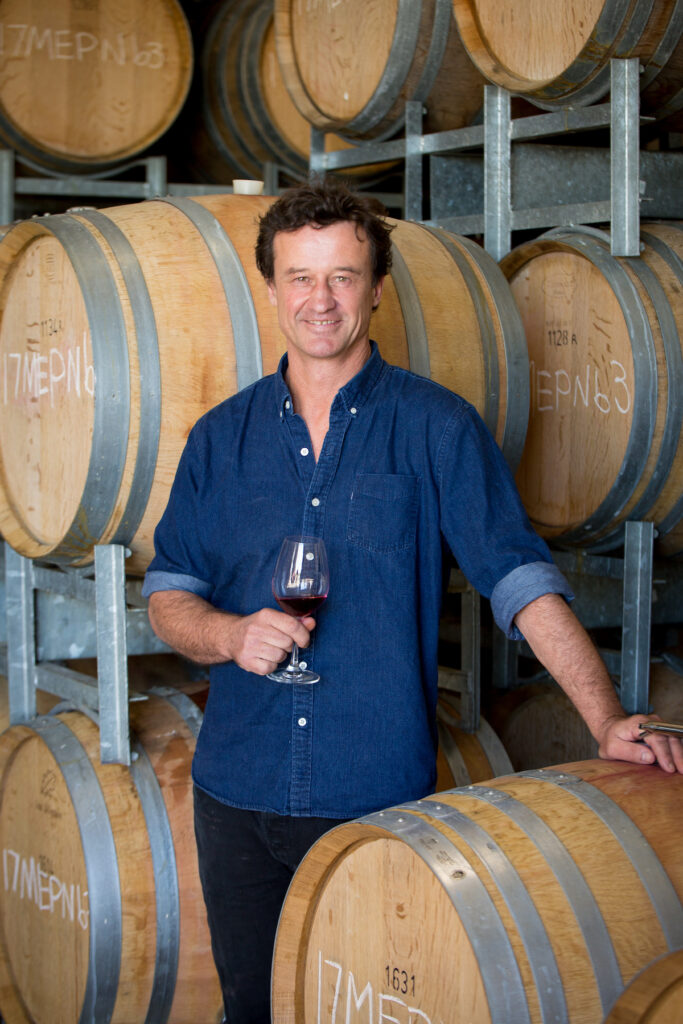
WF: What is it about Wairarapa that makes it special?
MD: It’s Pinot country. Pinot and Sauvignon. I spent most of my career up in Hawke’s Bay and just moved here about three years ago. The cool climate here is the difference. Across New Zealand you’ll find soils that are good for vineyards – alluvial soils over boulders and gravels. We have warmish days but cool nights so you keep the freshness and vibrancy, and don’t cook out the aromatics. And don’t get that too rapid a ripening where the wines just sort of blow out. Working with Pinot Gris in Hawke’s Bay you have to watch it because it can get over-ripe just like that – if you get a warm week. Whereas here even if you get a hot day you’ll have a cool night, so it’s a slower, longer ripening.
With Sauvignon we get more herbal characters here than in the Bay. It’s really recognisable Kiwi Sauvignon with that fresh acidity, nice and ripe with passionfruit and all that stuff, but without that real green bellpepper note. Just a fraction riper. It can go neutral so easily. One of the reasons that New Zealand Sauvignon is so stand-out is that in warmer places you can lose all that character in a couple of hot days. We have a similar temperature profile to Blenheim, not too different.
WF: I don’t know too much about how wine is made – I approach it very much from a consumer point of view.
MD: Well if you get the fruit right, then you can step out of the way to a certain extent. And the fruit is right there, so you can taste, keep an eye on when to pick. Keep an eye on the weather and then it’s your decision when to get it in. We’ve been doing well from the critics and shows – lots of gold medals and 90-something reviews.
WF: (looking at the plaques and certificates from shows) Ooooh, China loves you! Is that a big thing for you?
MD: It’s not huge, but it’s a growing market. There’s not all that many wine shows left in New Zealand now.
WF: I worked the Easter Show and the New Zealand International Wine Show as well this year. That was close to being able to go ahead – with COVID-19 restrictions, and became almost the last man standing. Did you have to make many adjustments as a result of Coronavirus?
MD: It was pretty good for us. Luckily our crew, including two young winemakers arrived from overseas… one from Italy on the day they stopped people from Italy coming in. They quarantined for a couple of weeks, then could join in. It was bloody good being able to work. We had our crew here and probably one result was we couldn’t do as much hand-picking in the vineyard this year.
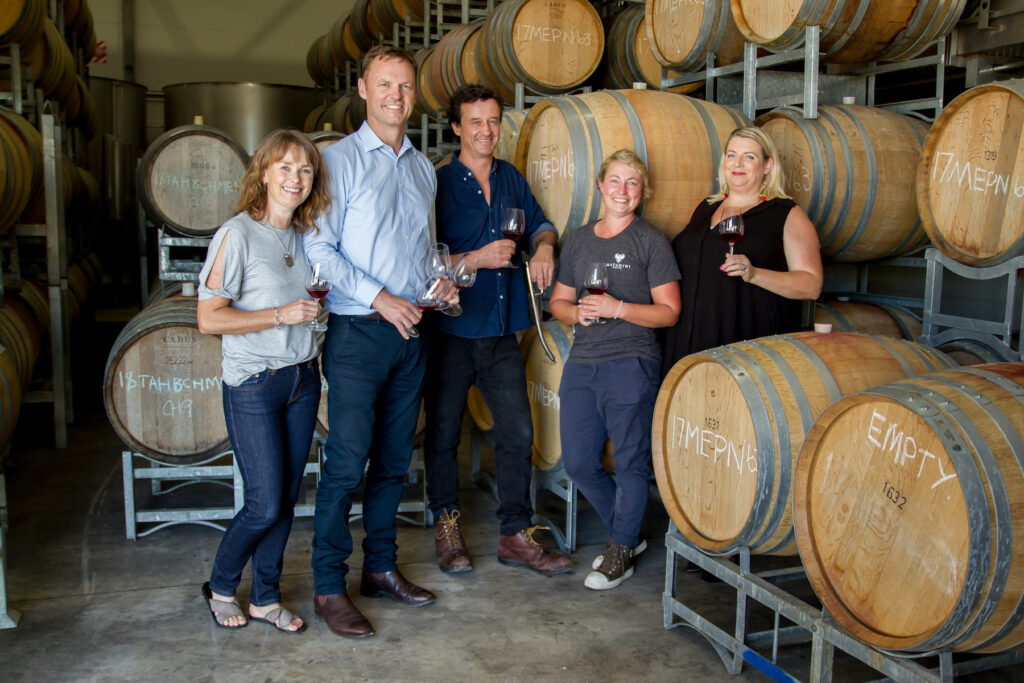
WF: What would you describe as your main varieties you focus on?
MD: Pinot Noir and Sauvignon Blanc are the two main drivers of the business obviously but we’ve got some Chardonnay, Pinot Gris and we make bubbles. The wines we make are very much kiwi wines. If you say ‘fruit forward’ I think that’s become something of a generalisation for kiwi wines. The fruit is very vibrant and recognisable, so it’s kind of true I guess.
WF: I think it’s a European perspective on our wines. Have you worked overseas?
MD: I’ve worked in California. All the fermentation techniques we use are French, all the yeast selections come from France. All the oak – every product, and there are catalogues full of them – all comes from Europe. In that sense we’re all doing the same thing. If they wanted to make fruity, aromatic style of Sauvignon Blanc in France, they can do it. It would taste different from a Marlborough one because the fruit’s different, but it’s using similar techniques.
WF: Do you think things like technology has helped the modern New Zealand wine industry get good quite quickly?
MD: Yes, all the things like selected yeasts, understanding of refrigeration, science, and microbiology. Spoilage faults – you just don’t see faulty wines like you used to even 15 years ago. Brett is very rare now – people are more aware of it now, and they don’t let it happen, and if it does, you can get a machine to take it out basically.
WF: And do you, with the ‘winemaker’ title – do you see yourself as the ‘creative’ one?
MD: It’s like cooking, except you only get to cook a few dishes each year. There’s quite a lot of technology available but everything you do is how you wanted it to be. On a site like this, and in most boutique vineyards in New Zealand, what your site gives you is what you’re making. If I came here and said “I want to make an Otago style Pinot with that big, dark purple colour and bold fruit” then you couldn’t do it. You’re not going to be able to harvest that, so what you do is no different from your winemaker in Burgundy where they’ve learnt – you make a wine of that site.
You can mess with it all you want, but it’s still going to taste of that site – that area. If you’re making a blend from multiple sites, you can grab a more consistent style. A big company that wants the wines to taste kind-of the same each year. You pick at medium ripeness every year and take your blending options. But if you’re on a single site like here, you can even tell a Masterton wine from a Martinborough wine.
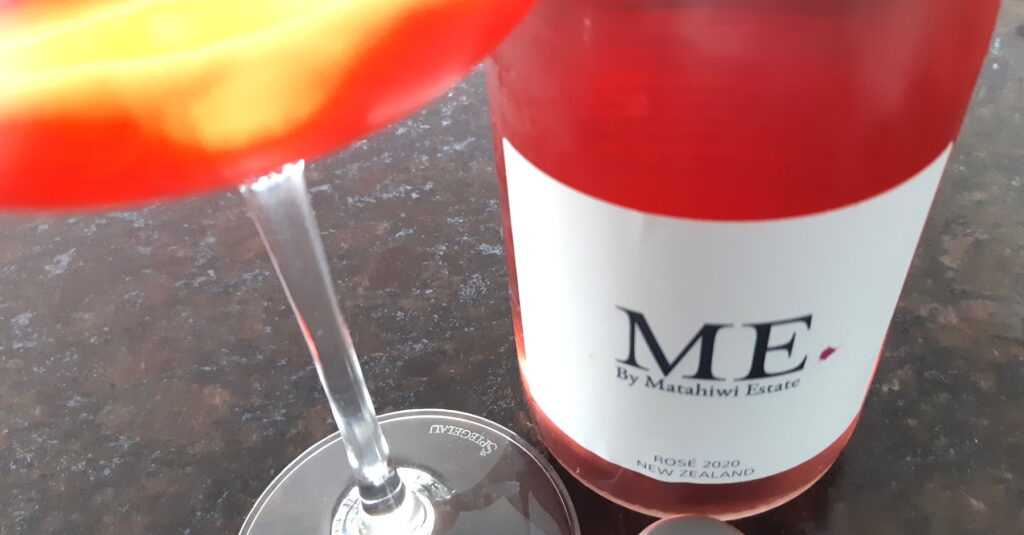
A lot of young winemakers come here from French, Germany, Italy and they like the freedom when they come over here. Winemaking rules are basically the same, reference keeping is the same, but it’s that sense of creative freedom. A lot of people are protecting their reputations – whether that’s 200 years or 800 years.
WF: Interesting. I like some of the New Zealand labels that you might think are ‘established’ but are still exploring. They could just bang out the same old ‘reserve’ wines that won them medals, but they’re not. I think that attitude sums up New Zealand wine.
MD: No, not too many people here doing that. New Zealand have still got the highest average bottle price point in the world. A lot of that is Marlborough Sauvignon Blanc and when you see how cheap wine is in Europe – with the subsidies – you can understand that. So that’s thought of here as ‘cheap’ wine but it’s actually quite expensive to make compared to most countries. But we’ve never had a big presence above that, so you can see some of that coming through now. When Montana bought Church Road for example, their intention was to take on the world with a great Bordeaux style red; and now those things are happening, with a bit of marketing muscle behind it. Which is good. I mean Napa did it – was just farm country and now it’s high-end wine. There’s no reason why we can’t be hitting those spots with Bordeaux style reds and Syrah in Hawke’s Bay, and Pinot for the rest of the country.
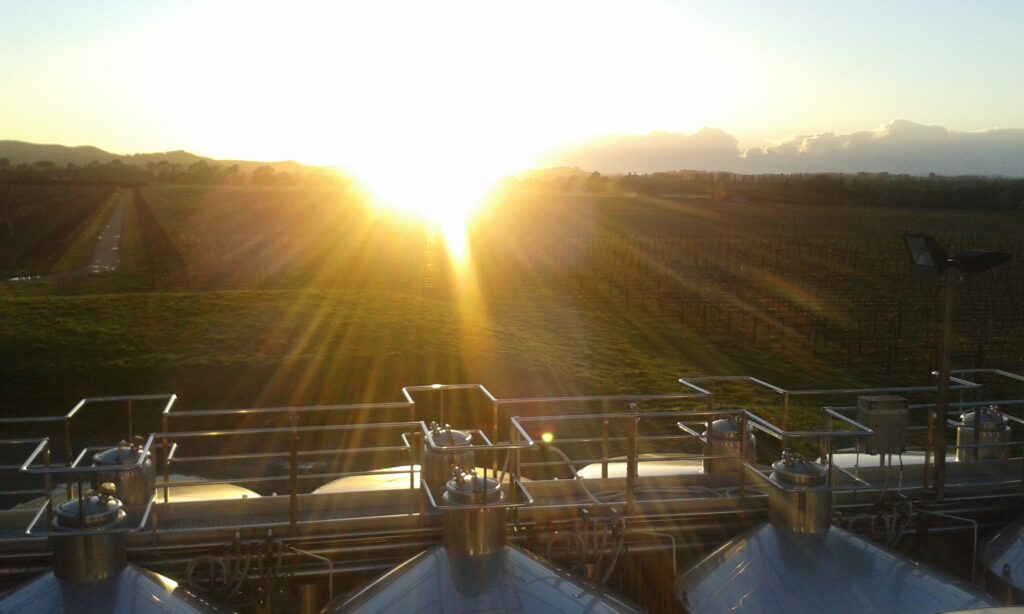
WF: Are there any varietals that you personally would like to play around with?
MD: There’s lots of things. Chenin. We’ve got no Riesling here but I guess it’s a hard sell isn’t it – Riesling. Maybe the public don’t like the taste of malic acid, don’t like Granny Smith apples enough.
WF: A lot of people say ‘Nebbiolo’ when I ask that question – I hear it over and over.
MD: There’s so little of it grown anywhere. Winemakers love Riesling because there’s so many ways you can make it. Bone dry to sweet.
If we were to plant more of something here, we could definitely sell a lot more Chardonnay. I made a tawny port up in Hawke’s Bay – it used to be huge in Hawke’s Bay.
WF: Sparkling?
MD: We make a sparkling here – we’ll try some. When I came down here and saw all this Pinot I thought l’d make some pink bubbles. Already make a Blanc de Blancs, so do a pink sparkling too.
Alaistar Scott set this place up and he’s still the owner – bought the site, planted It back in the late ‘90s and built the winery from scratch in ’03. Jane Cooper was the winemaker for the first 20 years, and she still makes the ‘Ohau’ wines here. This was a state of the art winery for that era. Got the mix right as far as Pinot Noir – and roughly every clone that was available at the time. And then Sauvignon as it was an export-focussed business for a long time. We’ve got a bit of Chardonnay here which does really well, and it makes a change from Hawke’s Bay Chardonnay as it’s a really different fruit profile from this cooler site. And Pinot Gris which I think works way better here than in Hawke’s Bay in my opinion. Keeps a much lower pH and keeps the acidity better – which is why I like Otago Pinot Gris as well. You get those ripe flavours but you keep that acid and lower pH.
WF: And anything other than winemaking that you would like to do? Any advice for your younger self – you know ‘really stick with the accounting’?
MD: Grew up on a sheep and beef farm, then travelled, did allsorts of stuff overseas, then came back here in my late 20s. A History degree was my first degree, but I met someone at a party in Northland who worked in the wine industry and they said they thought wine would be perfect for me – growing stuff, history, and the culture of wine. Haven’t really looked back. You’ve got to do a vintage before you get into it – the smell of yeast and fermenting stuff either gets you, or not.
Matahiwi has basically got three tiers. The ME range which is around 20 dollars. Matahiwi is Estate level, so that’s the original label and main export label. Then the Holly, which is the Reserve, named after Alastair’s daughter. The child that did the most work in the vineyard I think, so got the wine named after her! And since I’ve been here we’ve brought out this (the South Series) which is stylistically different and at a higher price point. They are all off this vineyard, but the top tier is a barrel selection and has more whole bunch in it. For the whites we do get a bit of Hawke’s Bay fruit in because there’s almost no Chardonnay planted in Wairarapa.
(We start to taste, with a couple of sparkling wines)
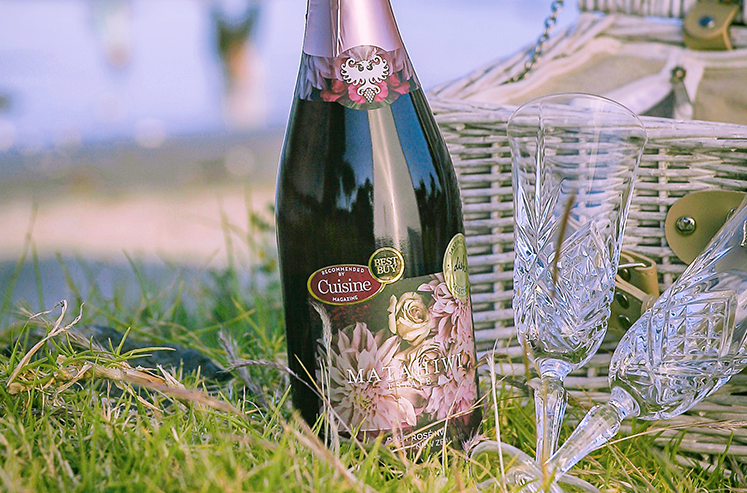
For our blanc de blancs we get fruit from Crownthorpe where it’s a bit cooler, picked on about 1st of March. The secondary fermentation is Charmat which suits better a fruit-driven style. For the fruit-driven style I think it makes it better than Methode. We make the base wine here, fermented dry, leave it on lees until it’s ready to go. Then up to WineWorks in Hawke’s Bay who have put in a Charmat plant there, which is a big pressure tank. The difference between Charmat and Methode is that it’s in a tank and then bottled under pressure, rather than in the bottle itself. Cost-wise it’s a lot less than Methode.
When WineWorks put that plant in a while ago, it really opened up for all the small clients to be able to make the sparkling. They’ve got bigger clients too. This is $25 and it goes really well. People are happy to have choices as you see a whole lot more diversity rather than those mainstream brands who have traditionally been there. Think how popular Prosecco has become and that’s made the same way basically. It’s gone really well for us, we sell a lot.
Then we do one that is 70% Pinot and 30% Chardonnay – off this vineyard. So that was a Hawke’s Bay wine and this is a Wairarapa wine. I made sparkling wine bases years ago when I was a Cellar Hand, and I really wanted to make bubbles again. This has got a little bit of Reserve wine from the year before, held in a barrel on full lees, so you got a bit more autolyic complexity, but still quite fruit driven. This is a great place to grow grapes for sparkling.
(three more wines are poured – rosé, Pinot Gris and Sauvignon Blanc)
This rose has been a double gold for us. 10/5 picked just out there – we marked off a block specifically for rose and left a little bit more leaf on. Keep the freshness, the acidity as we don’t need super dark skins. And then picking quite a bit earlier than for Pinot Noir. A lot of rose winemaking, all around the world, is all about the colour. This thing about the ‘right provencal colour’ that you want. This is machine harvested, put in the press, into a tank and fermented. That colour is what we got…I’m not chasing the trendy colour. Lovely fruit and it just jumps out the glass. People love it and we’re sold out – good problem to have.
WF: It’s a nice bright wine isn’t it? It’s blown off now, but there was just a little bit of funkiness in it when it was first poured.
MD: There’s a little bit – possibly about 5% that was saignee, drained off Pinot tanks. You’re very astute to pick that up – that portion was fermented warmer, so more like a Chablis-style ferment. That portion had really quite a viscose body. Most of it was tank fermented – clean, linear.
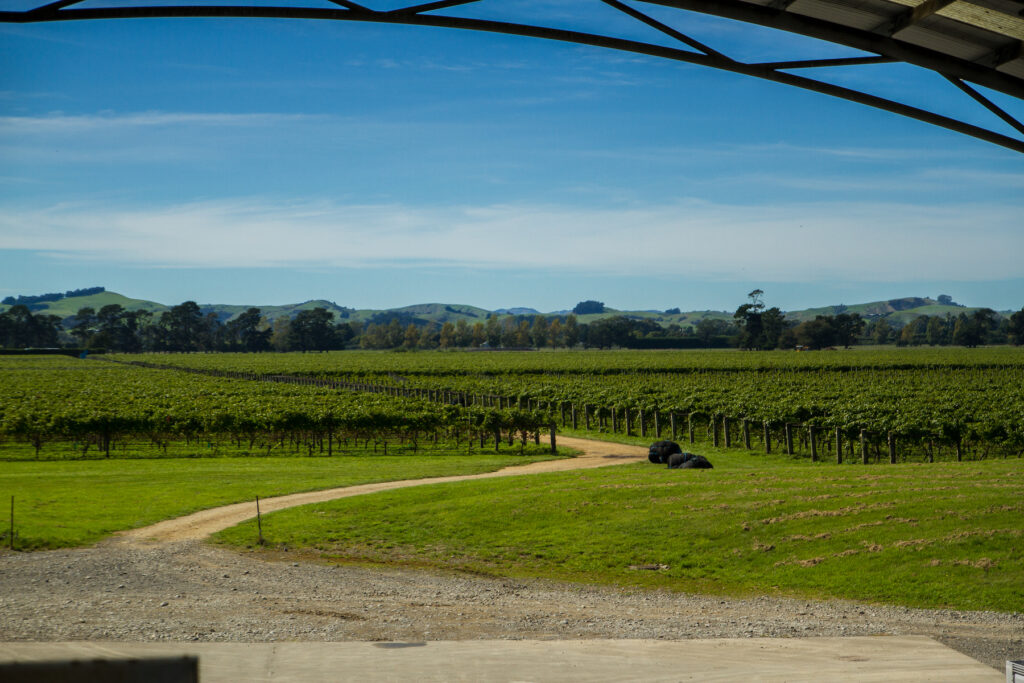
This is our Pinot Gris – it’s from our North Block over there. The Gris has that freshness, so you keep the acidity. Nice pear drop, spicy.
WF: Hmm, that’s not really grabbing me I have to say. It’s a bit lean and mean.
MD: Not the big unctuous style. Used to make it like that in Hawke’s Bay – that higher pH, richer, lower acid style. Pinot Gris can be polarising – you’ve got to follow a producer. Jane makes some great Pinot Gris here, from Ohau and they are always way sweeter than I make it, with more full-on aromatics. I prefer to go leaner – more Pinot Grigio-ish. Lower pH and I like that freshness. That’s how I like it and it sells!
WF: This on the other hand is very me! That’s delicious. I just walked out of Lime Rock with a 2005 Sauvignon Blanc! Excellent.
MD: And who says Sauvignon Blanc doesn’t age?
WF: Not me, I love them with a bit of age on them. I think sauvignon Blanc is an awesome wine – so much character!
MD: It works really well here. Since I’ve been here we’ve had a Gold Medal every year, sell loads. And I think people are really hooking on to the difference between Marlborough and Wairarapa. We’re tiny size-wise but people who like it, really like it. A bit less green, riper. It’s also a bit more popular in the States. I wonder if that’s one of the reasons why Craggy are planting more in Te Muna Road. In the States they don’t like methoxypyrazine – that really green bell pepper flavour. They like it in red wine, but really don’t like it in Sauvignon Blanc. And you can get a slightly higher price point for it as well, in that style, which is good as yields aren’t as high in Wairarapa as in Marlborough. The Sav is the engine of our exports.
This is our chardonnay. We do make some chardonnay from Hawke’s Bay in the Matahiwi and Holly tiers. This is the Wairarapa one – it’s just a really small parcel here. Hand picked, whole bunch pressed, straight to barrel and left to do its thing. Here, because of the acidity, you can go full malo and still get that nice freshness on the palate. Coming down here and making Chardonnay – I mean I still make it from Hawke’s Bay fruit as well, but I just love the stuff. We’ve got very little planted, but it makes a fantastic wine. About 25% new oak and full malo. In Hawke’s bay you can do full malo and the wines just get too broad and soft, whereas here it’s still got a nice line of acidity. It’s that cooler climate and low pH to start with. Also, I think they need at least a year to settle down – whatever time it spent on lees.. it needs that again to be ready.
WF: It’s got a savoury, sweetcorn type note to it. And there’s none of that reductivity upfront, but there’s a little bit at the back.
MD: Yes, sweetcorn, a bit of that is DMS – there’s complex sulphides in there. With the high solids fermentation you always get complex sulphides. It’s got concentration but a fine balance compared to some of the bigger Hawke’s Bay wines.
(we move on to the Pinot Noir)
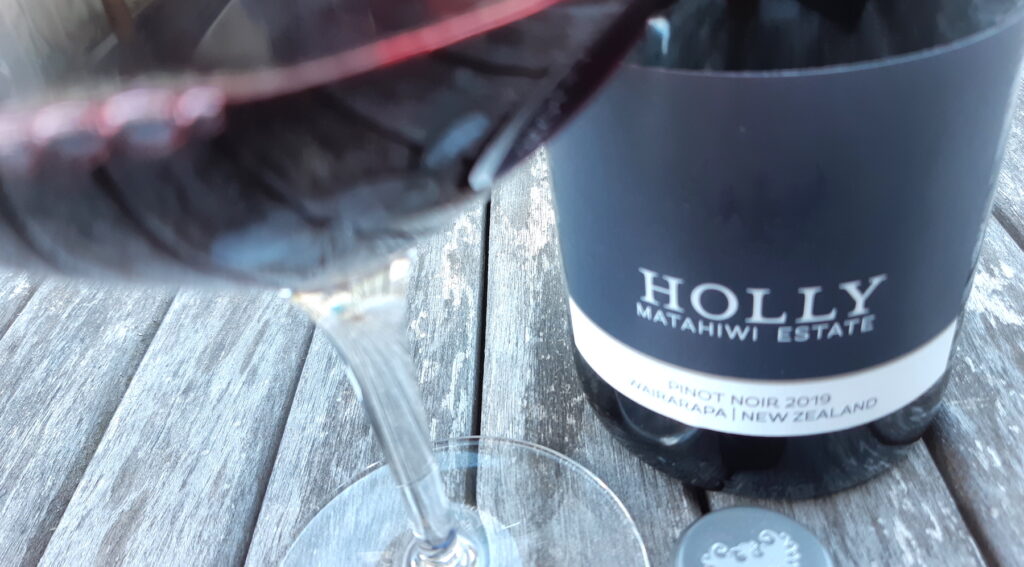
So, these are all ’19 Pinots, and escalating price points. The ME had a gold medal at New World Wine Awards, and does really well – a Pinot at that price point is fantastic obviously. We use more of the Clone 5 and Abel in the higher end wines. Abel is pretty much the Wairarapa signature really.
We do make a no-ads Abel-only Pinot – Wild Holly, which we don’t have as it’s all sold out – it’s sells out pretty much as soon as it comes out, but that’s always 95 point kind of wine. Completely no additives all the way through the winemaking and bottled with no sulphur – just 3 barrels. The Holly is around $30 and is our classic Wairarapa Pinot. Amazing value. It’s our main export Pinot.
Crop yields are low in Wairarapa anyway, but for our Reserve blocks, we do crop thinning, careful viticulture and the wines get a bit more new oak. A bit more time in the barrel so a bit more richness and some hearty tannins. To me Wairarapa Pinot has a little taste of the dirt, more earthy character than Central Otago.

